Table of Contents
What Is a Red Roan Horse?
Red roan horses are horses with the roan gene and a chestnut base color. Such horses have a uniform mixture of white hair and red hair in their coat.
Depending on the shade of the chestnut base color, the mixture of white and red hairs can give red roan horses a lighter appearance. So, while they’re named red roans, they could look anywhere between almost chestnut and pinkish.
Geneticists sometimes prefer to refer to red roans as chestnut roans. However, you are more likely to come across the term “red roan.”
People sometimes refer to a red roan as a bay roan. But this is not a correct substitution. Red roans and bay roans are two different variations of the roan pattern. While red roans have red points (tails, manes, lower legs, tips of the ears), bay roans have black points.
Most of a red roan’s coat consists of an even mixture of white hair and red hair. However, areas like the mane, head, leg, and tail are typically red or red with few white hairs.
Below, you will find that we’ve compiled a list of eight red roan horse breeds. We talk about their origin, size, unique features, other color patterns they can have, and much more. Read on and enjoy.
1. Missouri Fox Trotter
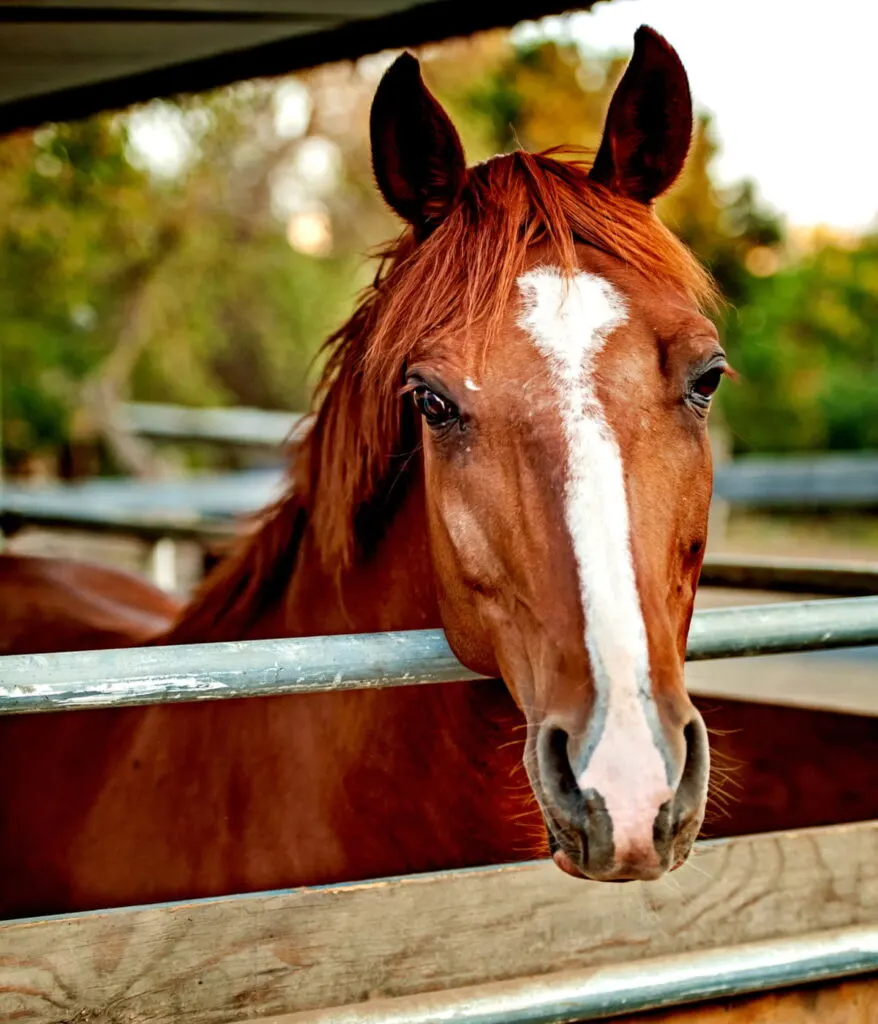
The name of this breed already gives its origins away. The Missouri Fox Trotter is a breed from the Ozark mountains in Missouri. The breed became well-known thanks to its fox trotting (ambling) gait.
Missouri Fox Trotters are gaited horses. Their gait – the fox trotting – involves stepping deliberately and carefully without high steps.
Missouri Fox Trotters come in various colors. But more commonly, you will find them in chestnut, gray, black, and champagne. Missouri Fox Trotters can be red roan or any other roan color. They can also be palomino or one of many color patterns.
On average, Missouri Fox Trotters are 14 to 16 hands tall and 900 to 1,200 pounds heavy. They typically live for 20-30 years and can live even longer with top-notch care.
Missouri Fox Trotters are friendly, surefooted, lovely, and good-natured. It is no surprise they are great with beginners and children.
2. Haflinger
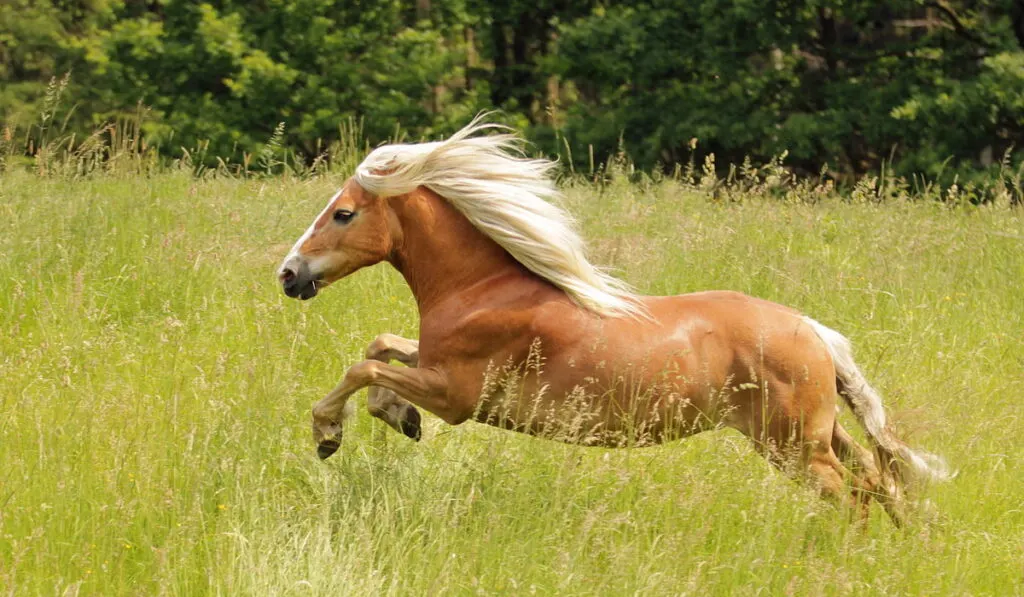
The Haflinger is an Austrian horse breed known for its strength, versatility, and compactness. This breed was traditionally a draft animal. But today, people use it as more than just a draft animal. Haflinger horses today take part in trail riding, dressage, and driving.
Haflinger horses typically have chestnut coats with flaxen manes and tails. However, they could also be red roan.
Standing at around 13.2 to 15 hands, Haflinger horses are generally not tall. On average, they weigh 800 to 1,300 pounds.
In many cases, Haflinger horses are friendly and laid-back. However, there are cases of Haflingers giving their owners a hard time.
Haflingers are generally healthy. They have a life expectancy of 25 to 30 years. However, they are prone to equine metabolic syndrome and laminitis.
3. Icelandic Horse
Icelandic horses found their way into Iceland around 900 AD, when they came with the Vikings. They were originally Viking horses, but their development happened in Iceland.
Icelandic horses are one of the most colorful horses in the world. They come in more than 40 base colors with over 100 variations. Basically, you can find them in almost all equine colors.
While Icelandic horses come in the roan pattern, the occurrence is pretty rare. They are more commonly chestnut, black, bay, or brown.
Icelandic roan horses undergo a seasonal alteration in their coat color. For this reason, people sometimes call them color changers. In summer and winter, their actual color is pretty easy to tell. However, in spring and fall, the middle layer of their coat appears white.
Icelandic horses are perhaps the purest horse breed worldwide. For over 1,000 years, the Nordic island nation has allowed no other horse breed into their territory.
Also, the country never allows an Icelandic horse that leaves the country to return. Hence, there are no variants of the Icelandic horse.
Icelandic horses are gaited horses. Beyond the typical trot, walk, and canter, they have a flying pace and the tölt.
Icelandic horses are coldblooded horses. They weigh around 730 to 840 pounds on average while standing at 13 to 14 hands. In general, they are friendly, patient, and kind.
4. Falabella Horse
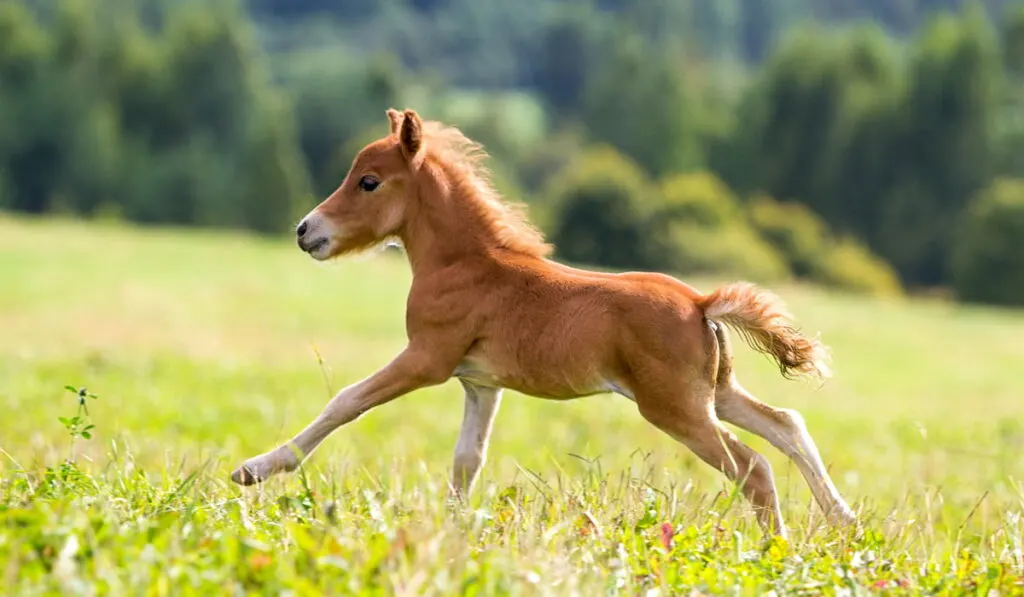
The Falabella horse is a miniature horse breed native to Argentina. It has a heritage tied to Andalusian horses and some other Iberian breeds.
Falabella horses are one of the smallest in the world. On average, they are only around six to seven hands tall. And they typically do not exceed eight hands. While they are small, the proportions of a Falabella horse are pretty much the same as regular horses.
Falabella horses come in almost any equine color. However, you are more likely to find them in black and bay. You may also find them in red roan (and other roan colors), pinto, and palomino.
Generally, Falabella horses are intelligent, level-headed, loyal, and friendly. You can have them around kids, and, with sufficient training, they can get along with household pets.
Falabella horses are generally healthy, and they have a life expectancy of up to 45 years. However, they are prone to colic.
5. Tennessee Walking Horse
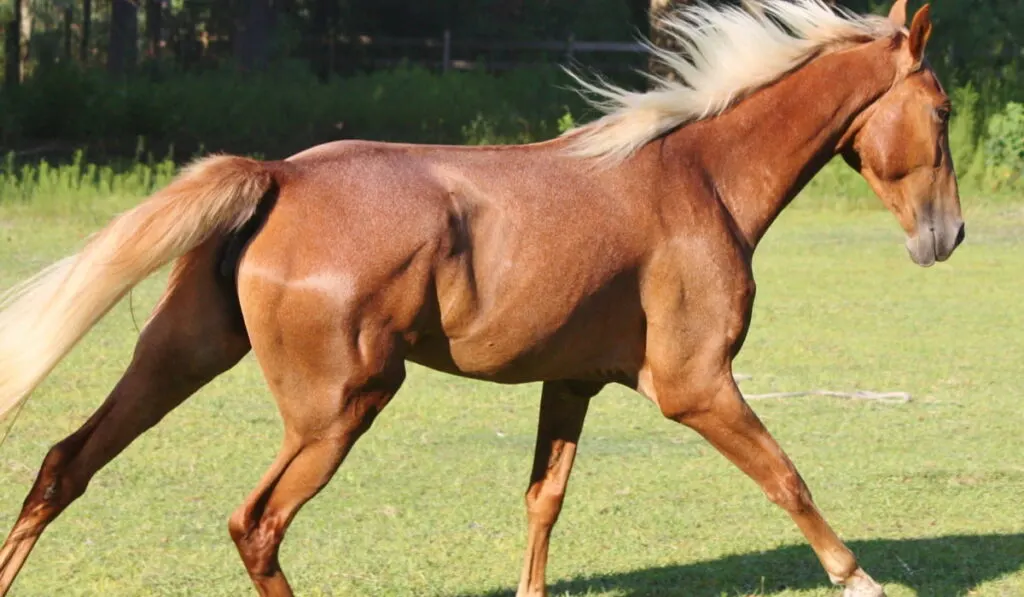
As the name implies, Tennessee Walking horses are an American horse breed. More specifically, they are from the state of Tennessee. People sometimes call them Plantation Walking horses and Walkers.
Tennessee Walking horses are gaited horses. They have an unusual running-walk gait, and this is why “walking” is in their name.
Tennessee Walking horses come in various colors and patterns. In fact, they are almost always registered, no matter their color. Tennessee Walking horses are typically black, chestnut, bay, and brown. However, they can also be roan, pinto, buckskin, palomino, and dun.
Originally, Tennessee Walking horses were used as riding horses for farmers. These days, people still use them for riding. But apart from that, Tennessee Walking horses take part in shows and trail riding.
Tennessee Walking horses usually weigh 900 to 1,200 pounds. Their height falls between 14.3 and 17 hands, and they have a life expectancy of around 30 years.
6. Standardbred
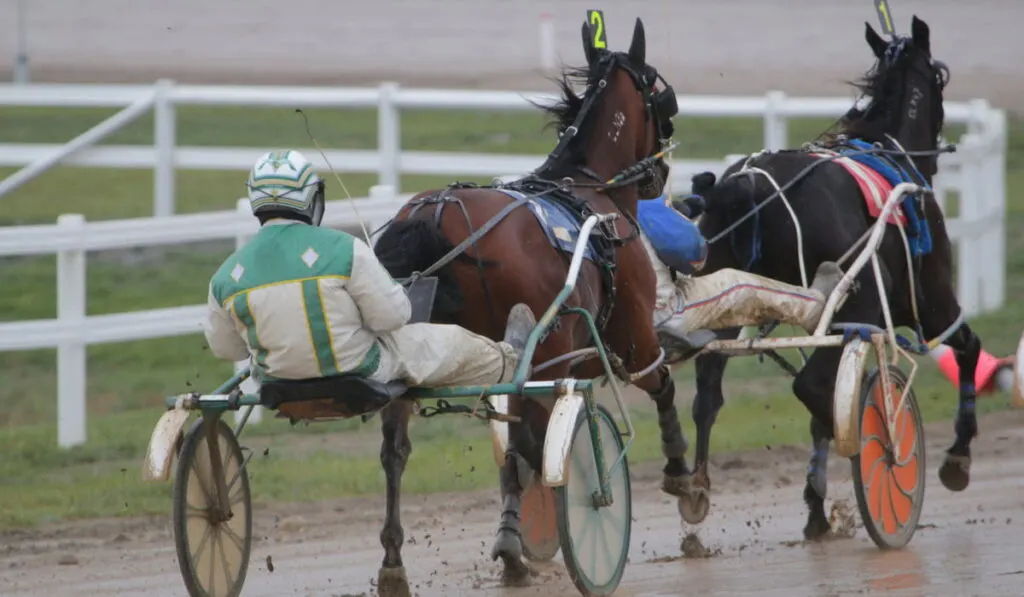
The Standardbred is an American breed with a Thoroughbred heritage. Developed in New England, this breed was primarily used for harness racing, thanks to its stamina and speed. But it serves more purposes now, including pleasure driving, speed games, endurance driving, and jumping.
There are two variants of the Standardbred breed: pacers and trotters. Both variants differ in their gait and harness racing speed.
Trotters have a diagonal gait, while pacers move their left and right legs in unison. Also, pacers are faster than trotters in harness racing.
While Standardbred horses look somewhat like Thoroughbreds, they have a smaller-sized frame with heavier bones and lower bodies.
Standardbred horses usually come in solid colors like bay, chestnut, gray, and brown. However, they can also have the roan pattern but no patches, spots, or facial markings.
Standardbred horses are usually 800 to 1,200 pounds heavy and 14 to 17 hands tall. They have a life expectancy of 25 to 30 years and have no specific health problems.
In general, Standardbreds are calm and friendly. They enjoy human company and are suitable for riders of all levels.
7. Curly Horse
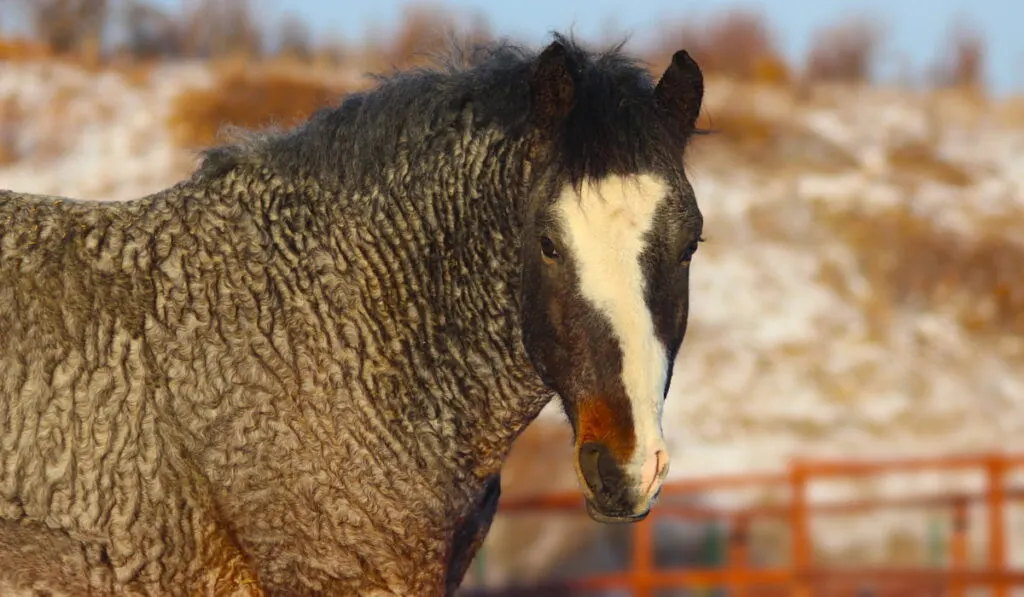
The origin of the Curly horse (also known as the Bashkir Curly) is still a mystery. However, the world documented the breed for the first time in Nevada.
While Curly horses come in various colors, sizes, and body structures, they share one common feature – their curly coat. Of course, their curly coat – which comes from a single gene – earned them the name Curly horse.
You would expect that most Curly horses would have curly coats. Interestingly, this is not so. You may come across some Curly horses with straight hair.
Bashkir Curlies come in various colors, more commonly black, bay, and gray. However, you may also find them in red roan, pinto, grullo, and many other patterns. Bashkir Curlies are so diverse that you’d rarely ever find two horses that look the same.
The average Bashkir Curly measures 13.3 to 16 hands while weighing 800 to 1,200 pounds. But the volume of their hair might make them seem larger.
Bashkir Curlies are gentle, friendly, and easy to train, and they have a life expectancy of 25 years.
8. Welsh Pony
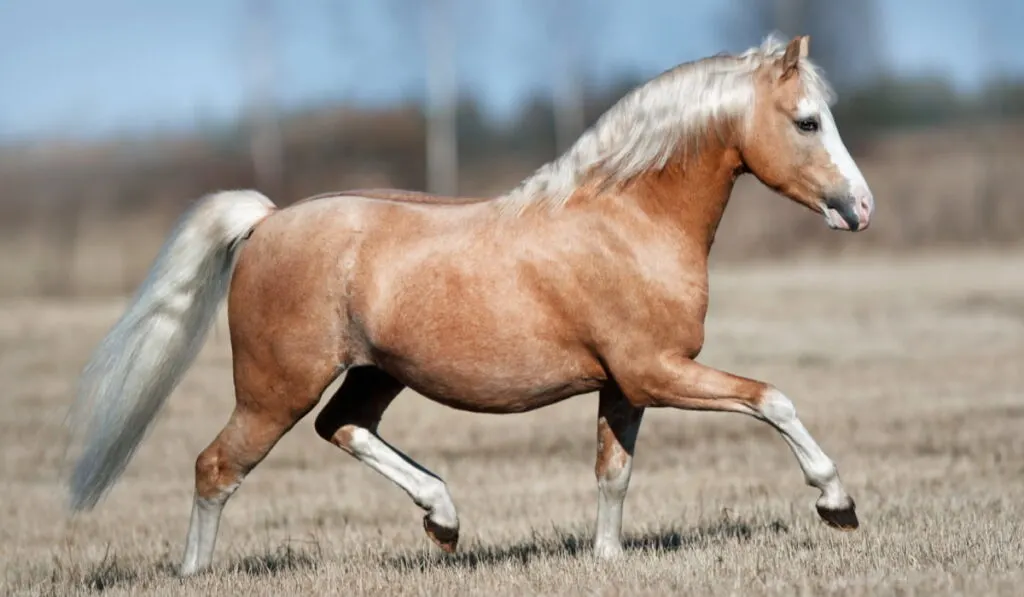
As the name implies, the Welsh pony is a Welsh horse breed. As expected of a pony, they are relatively small. But even with their small size, they are pretty powerful.
More times than not, you will find Welsh ponies in solid colors, including chestnut, bay, black, gray, brown, and cream. But they also come in red roan, blue roan, and other roan colors.
There are multiple classes within the Welsh pony breed. The classifications generally group the horses into cob type and pony type. This is why the breed also goes by the name “Welsh Cob.”
Based on their height, Welsh ponies generally fall into one of four classes: section A ponies, section B ponies, section C ponies, and section D ponies. These classes also go by Welsh Mountain pony, Welsh pony of riding type, Welsh pony of Cob type, and the Welsh Cob, respectively.
Average Welsh ponies are about 400 to 700 pounds heavy and 12 to 15 hands tall. They can live as long as 35 years. However, they are prone to laminitis.
The Welsh pony and Welsh Cob are generally low-maintenance, friendly, and easy to handle.
Resources
- https://insiderhorse.com/akhal-teke/
- https://www.horsesoficeland.is/the-icelandic-horse/colours
- https://insiderhorse.com/falabella-horse-pony/
- https://www.thesprucepets.com/meet-the-tennessee-walking-horse-1885862
- https://www.britannica.com/animal/Tennessee-walking-horse
- https://petkeen.com/tennessee-walking-horses/
- https://www.thesprucepets.com/meet-the-american-standardbred-1886139
- https://www.britannica.com/animal/Standardbred
- https://horseracingsense.com/colors-roan-horse-blue-red-facts/
- https://www.aqha.com/-/horse-breeding-the-roan-quarter-horse-color
- https://www.ridearoan.com/what-is-a-roan
- http://www.riding-iceland.com/blog/the-icelandic-horse-is-a-1000-year-old-purebred
- https://www.horsebreedspictures.com/icelandic-horse.asp
- https://www.thesprucepets.com/haflinger-horse-breed-profile-4797757
- https://www.equinenow.com/redroanstandardbred.htm?orf
- https://timetoride.org/riders/about-horses/horse-breeds/standardbred/
- https://www.thesprucepets.com/meet-the-welsh-pony-and-cob-1886141
- https://www.thesprucepets.com/missouri-fox-trotter-horse-breed-profile-4628324
- https://petkeen.com/falabella-horse/
- https://petkeen.com/bashkir-curly-horse/

